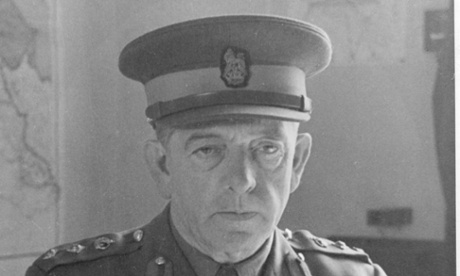
It is strange, given the important and dangerous role played by Thomas Kendrick in crucial episodes of the twentieth century, both as a spy for MI6 and in helping thousands of Jews escape from Austria before the outbreak of war with Nazi Germany, that he has not been properly acknowledged.
Helen Fry has filled the gap with an exhaustively-researched book on a man whose life cried out for an autobiography. Fry describes her book as the beginning of a campaign to have Kendrick and his MI6 secretaries in Vienna recognised as “Righteous Gentiles” at Yad Vashem, Israel’s National Holocaust Memorial. She calls Kendrick Vienna’s “Oskar Schindler”, and points out that Frank Foley, his British Passport Office colleague in Berlin who saved more than 10,000 Jews, has been honoured at Yad Vashem.
The British Passport Office and MI6 were virtually the same organisation at the time. Kendrick was posted to Vienna, a centre of espionage and political intrigue in the 1930s. There, he met and recruited as informers opponents of Hitler, left-wingers and their circle, including the British spy Kim Philby and the recruiter of Russian spies, Edith Tudor-Hart. When Hitler annexed Austria in the Anschluss of March 1938, Kendrick was swamped by a human catastrophe of unparalleled proportions. He and his staff worked 12-hour shifts handing out visas to more than 200 Austrian Jews a day, in operations that sometimes involved forged baptism certificates.
With the help of a double agent, Karl Tucek, who spied for the Abwehr, Germany’s foreign intelligence service, the Gestapo’s “elusive Englishman” was arrested in August 1938 - the very time, Fry notes, that Hitler was putting the final touches to Operation Green, the invasion of Czechoslovakia.
Kendrick was released. What saved his neck, Fry writes, was “undoubtedly the upcoming Munich Agreement by British prime minister Chamberlain and Hitler”.
Since the end of the first world war British intelligence had concentrated their resources almost exclusively on the threat of communism, and was not equipped to cope with the rise of Nazism. In 1938, Hugh Sinclair, the head of MI6, advised Chamberlain to appease Hitler and buy time. The country was “ill-prepared militarily and in terms of its intelligence structures”.
At the outbreak of war, Kendrick and a small team began to operate the Combined Services Detailed Interrogation Centre, which Fry describes as the “biggest bugging operation ever mounted against the enemy in British history”. His task was to interrogate enemy prisoners of war, first at the Tower of London, then, in M Rooms (M standing for “miked”) at Trent Park in north London, and later at Latimer House and Wilton Park in Buckinghamshire, about which Fry has already written in The M Room: Secret Listeners Who Bugged the Nazis in WW2.
Kenrick’s team of secret listeners - German speakers - picked up important intelligence, including details about Hitler’s “secret weapons”, the V1 and V2s, and a V3 rocket programme near Calais. One of Kendrick’s colleagues went so far as to say that “had it not been for the information obtained at these centres, it could have been London and not Hiroshima which was devastated by the first atomic bomb”.
Fry notes that the listeners also amassed a substantial amount of evidence of atrocities and war crimes, covering “most of what is known today as the Holocaust”. After the war, Kendrick was assigned to “special duties”. Fry assumes he continued to work for British intelligence, probably at MI6 headquarters,
until he retired in 1948. He died in 1972.
Kendrick was a central figure during a vital period for British intelligence. It is surprising Fry has not found a mainstream publisher and had to rely on her own resources. Her book could be edited down - there is almost too much detail in it. But it is an extremely valuable contribution to our understanding of a secret world inhabited by brave, resilient, sometimes exotic, individuals, gathering intelligence in a task now too often handed over to automatic computer-driven electronic eavesdroppers which have no judgment and cannot see the wood for the trees.
Spymaster is published by Marranos Press, £11.99

